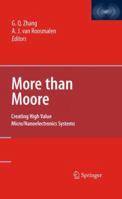Backward Stochastic Differential Equations: From Linear to Fully Nonlinear Theory
Select Format
Select Condition 
Book Overview
Provides a systematic study from linear equations to fully nonlinear equations
Includes up-to-date developments in the field
A powerful and convenient tool for financial engineering and stochastic optimization
Accessible to graduate students and junior researchers
Format:Hardcover
Language:English
ISBN:1493972545
ISBN13:9781493972548
Release Date:August 2017
Publisher:Springer
Length:388 Pages
Weight:1.63 lbs.
Dimensions:0.9" x 6.1" x 9.2"
More by zhang
Customer Reviews
5 customer ratings | 5 reviews
There are currently no reviews. Be the first to review this work.




































